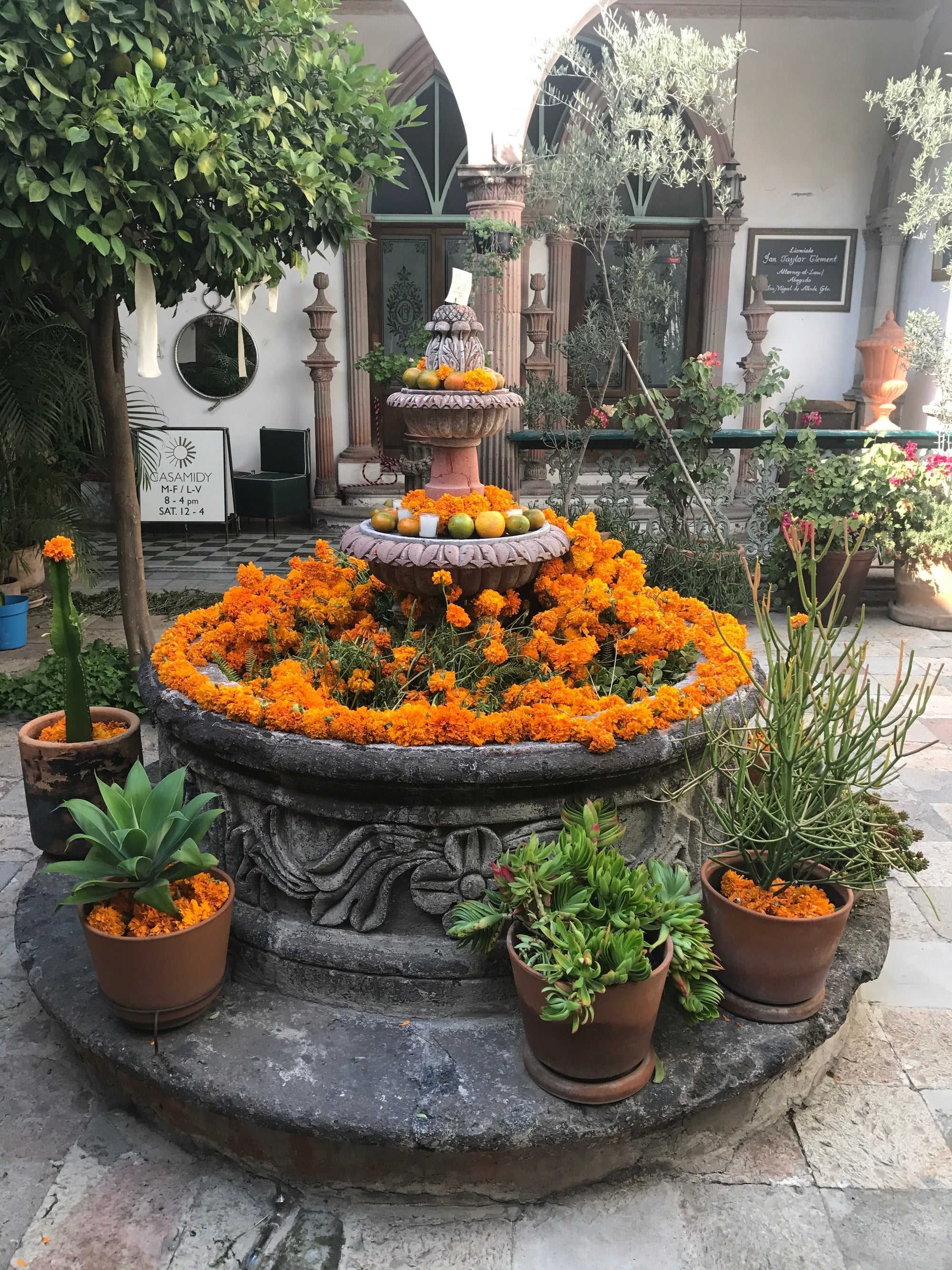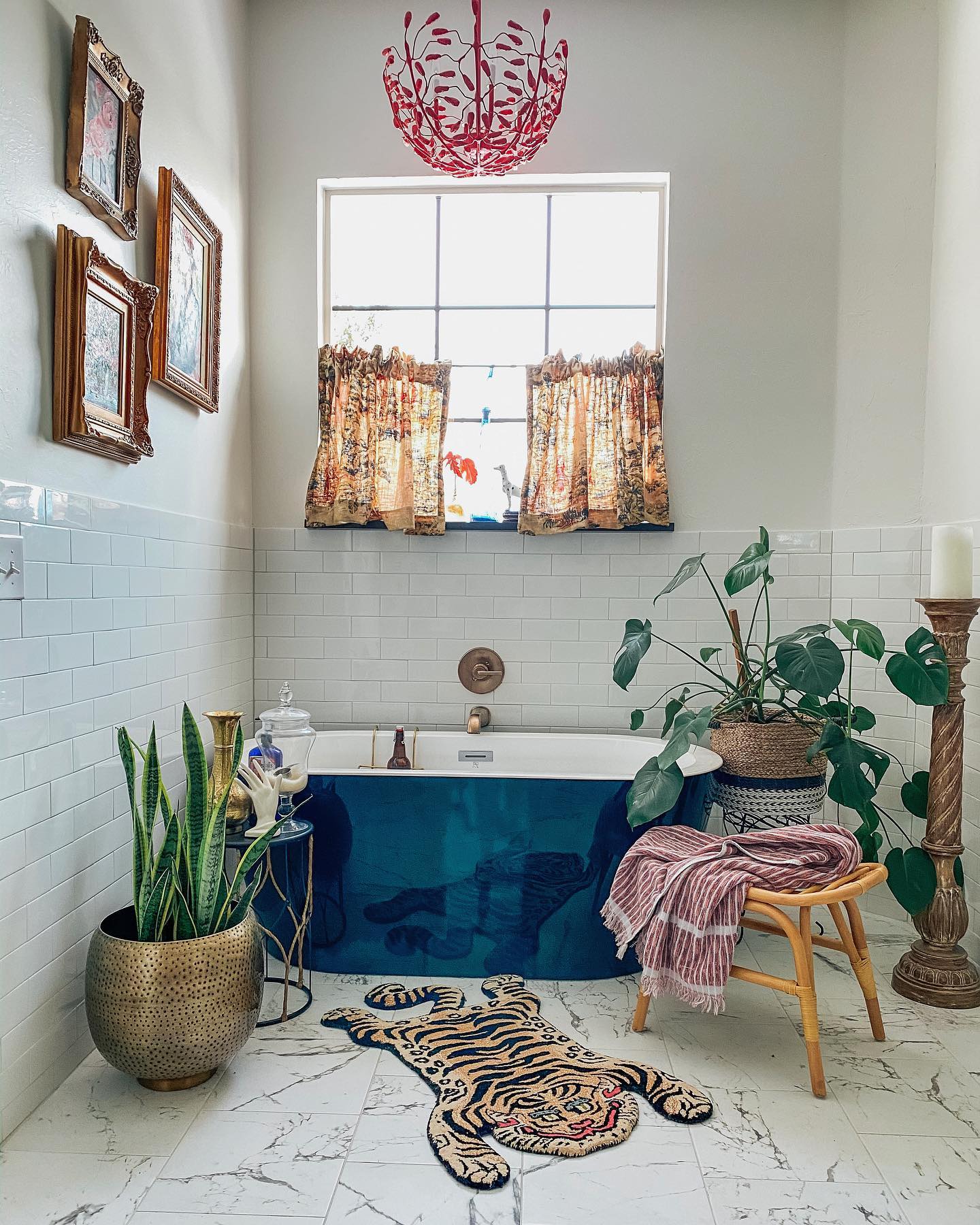I bet a lot of you saw this article in the New York Times the other day about Carolina Herrera, her muy muy Mexicana resort 2020 collection and the resulting accusation by the Mexican government of cultural appropriation. If you missed it you should go back and read it. It’s thought provoking. I have been chasing my tail over this particular brand of copycatting all week. I could go on and on and on about intellectual property and the number of times we have been knocked off and the pervasiveness of design theft in our industry, etc etc but I will save that for another day.
Let’s stick with the cultural appropriation vs. inspiration theme and the rampant use of Mexican folk art and motifs in the design world. God knows there couldn’t be a design house in the universe, from Zara to J.Crew to Isabel Marant that hasn’t come out with their version of a “Mexican peasant blouse." Then there is the pervasive adoption of the iconic Otomi pattern. I’m going to focus mainly on that for simplicity. (And because we do a version, too)

And we sure are not alone. There are numerous retailers out there now with that exact business model. Instead of borrowing a cultural design, they are going directly to the communities working with the artisans and providing a sales channel for their traditional craft along with economic growth. And, in many cases, helping the artisans tweak their creations to appeal to a wider audience.
Hermes, as I understand it, collaborated with Otomi artisans for a line of scarves a few years back. St. Frank seems to do a nice job of ethically sourcing and promoting craft worldwide, including Otomi textiles. Both El Camino de Los Altos and Pippa Holt Kaftans do a beautiful job of bringing traditional back strap woven textiles from Oaxaca and Chiapas to market. Mi Golondrina is another great example of this business type.But what about that gazillions of merchants to be found on the interwebs promoting their Otomi this or Otomi that? Honestly, you can’t turn a corner these days without seeing a rendition of the very distinctive and fantastic “magical animals” pattern splashed on some product or another.
Truly. It’s everywhere.
Take a gander at just a few found when you Google Otomi...

{Mara Hoffman dress. Photo via Honestly WTF.}

{Boden swimsuit. Photo via Boden.}

{Katie Kime melamine plate. Photo via Katie Kime.}

{Ethan Allen wall print. Photo via Ethan Allen.}

{Restoration Hardware crib bedding. Photo via RH.}

{Hygee & West wallpaper artistry fabric. Photo via Hygge & West.}
And that is just the tip of the Otomi iceberg. So what is that? Is that design theft? Or cultural appropriation? Or is it just enthusiasm and appreciation of cultural creativity and craftsmanship? When is it ok to “draw inspiration” from an ethnic group’s art and when is it not? Especially in today’s weirdly insular and nationalistic political environment, I think it is crucial to celebrate and highlight cultural diversity and exchange. But when is it too close?
Mostly these vendors seem to either call their patterns “Otomi” or reference the Otomi in their product descriptions so they are acknowledging their design source. And clearly many of the goods cloaked in the Otomi riff could never have been produced by the actual creators. You couldn’t go to Tenago de Doria and ask the ladies to hand embroider your plastic cell phone covers or your wallpaper or you melamine plates, etc etc. But what is the right thing to do in that situation? Is it ok to take the pattern as long as you use it in a different application? Who gets to decide that? And, if not, is there a way to fairly compensate the originator of a culturally emblematic style? Heaven knows these artisanal communities, and the Otomi in particular, are struggling and any sort of financial restitution would be hugely meaningful.
And what about those powerhouse vendors that "borrow" the design and trot off to China or where ever and have their bedding or clothing embroidered in factories? Is that really ok? I'm quite sure it's a whole lot easier logistically and far more profitable. I get that, as I mentioned earlier, going to the source can be cumbersome. But surely it's not nice to poach a people's cultural identity, have it mass produced and then pocket the cash?
And that brings me to a bigger question. Did any of these umpteen purveyors of “inspired” goods even consider reciprocating? Did design theft or cultural appropriation ever even cross their minds? I kind of doubt it. I bet a huge percentage of them didn’t even think about it. Maybe that is what it boils down to...we all need to be more thoughtful.
I will leave you with a personal and, in my opinion, completely unambiguous example. This pic was taken by my observant friend, Kate, in The Monaco hotel in Pittsburg, a couple years back. As you can see, it has a screen printed version of our Otomi shade, a tripod gold iron base and even my goofy berry finial! Holy "inspiration"! It would have been awfully nice had they bought from the designer/creator rather than ripping us off...we could sure use the business and so could our lovely Otomi artisans. I guess the people at the Kimpton Hotels are too busy counting their money to think about ethically sourcing. Copy Cats!
Thanks for reading! Let's keep this conversation going in the comments below. For making it all the way to the end of this lengthy and informative blog post, we are offering 25% off out Pato and Paulina Otomi Pendants! Use code OTOMI25 at checkout. Code good until Sunday, June 23rd at Midnight.



